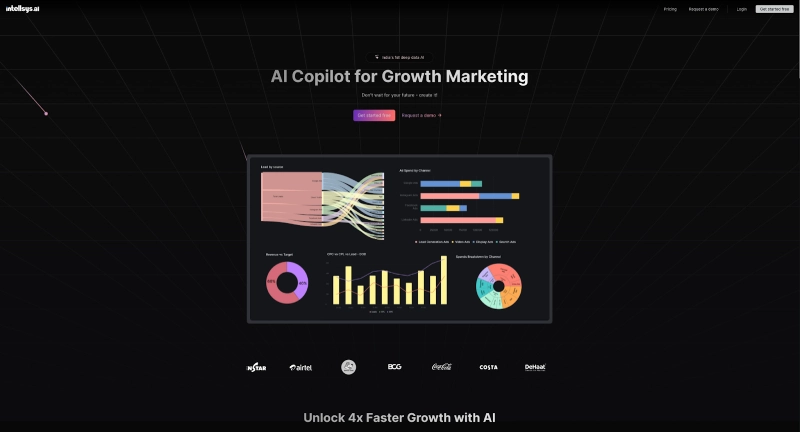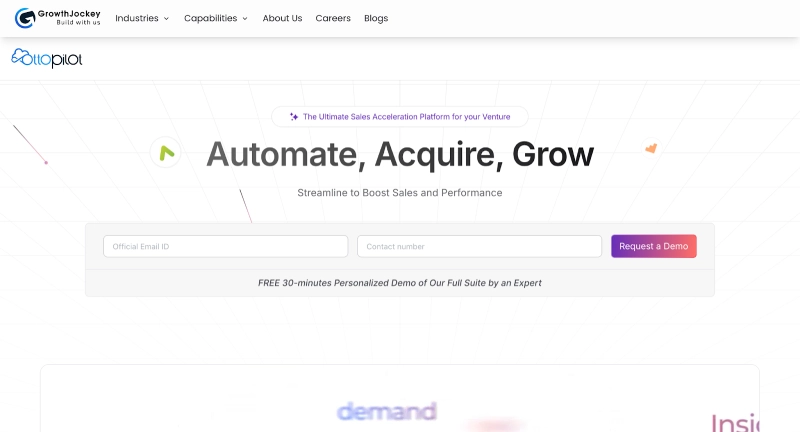Whitespace Analysis: How SleepyHug Identified and Captured a D2C Space

The mattress space in India isn’t short on brands, but it was short on clarity. Prices change based on your pincode, delivery could take weeks, and good luck figuring out returns.
In fact, a 2023 LocalCircles report found that 41% of Indian shoppers are unhappy with return experiences, and over half complain about poor delivery visibility.
That’s a powerful white space: even devoted customers are walking away before they click “buy,” simply because they don’t believe delivery and returns will be seamless.
This e-commerce case study breaks down how SleepyHug spotted that exact gap and filled it. Backed by GrowthJockey, the team used sharp whitespace analysis to identify a very specific opportunity: orthopaedic comfort under ₹15K, delivered fast, with no pricing surprises.
So if you’re exploring whitespace market analysis or searching for a case study related to e-commerce that's actually actionable, this one’s for you.
What is White Space Analysis
White space analysis is a strategic method used in business, marketing, or product development to identify unmet customer needs, market gaps, or areas with untapped potential. The goal is to find "white space" areas where no one is currently offering a solution or where existing solutions are inadequate so a company can innovate, expand, or reposition itself for growth.
How GrowthJockey's two-week whitespace sprint found the gap
SleepyHug set out to build something purposeful. The team wanted to solve real friction in how people evaluate, trust, and buy something as personal as a mattress without guessing their way through it.
That meant doing the homework most e-commerce businesses skip. A full-blown whitespace analysis, run like a sprint. It’s a way to spot unmet demand in a crowded market. You map what customers want, what competitors are offering, and where the disconnect lies.
This phase became a foundational step in the e-commerce case study that followed. Here's how the team cracked it within the designated time:
1. A 300-SKU teardown across top marketplaces
The team pulled listings from Amazon, Flipkart, and D2C brand sites, breaking down over 300 mattress SKUs across key variables. These included firmness, cooling tech, price bands, delivery times, and customer ratings.
Combined with a scrape of 2,700+ real customer reviews, this revealed two critical insights:
-
Orthopaedic support was frequently requested but poorly rated
-
Cooling features were reserved for high-end SKUs, not mass-market ones
That’s where the whitespace sat: orthopaedic + cooling at a mid-price point, with no major brand nailing all three.
2. 22,000 daily price points tracked across cities
To test if pricing inconsistency was part of the problem, the team turned to GrowthJockey’s Intellsys Pricing Recommender - a live pricing engine for data-driven decision making. It scraped real-time prices across 40 cities and multiple PIN codes.
They found one clear insight: the same mattress could vary by up to ₹7,000 depending on your city or pincode. That kind of pricing opacity was frustrating buyers and killing trust. So, from day one, SleepyHug committed to one transparent price, everywhere.
3. Narrowing the launch point with Intellsys.ai
Once the product direction was clear, the team used Intellsys.ai to layer demand signals with margin expectations.
By mapping comfort scores against pricing thresholds, they locked in on a queen mattress at ₹14K that hit the sweet spot of quality, affordability, and profitability.

This clarity made it easier to say no to low-margin variants and focus the brand’s early push around one high-conviction SKU.
If you’re weighing five product ideas and can’t tell which one will stick, Intellsys will cut through the noise, just like it did for SleepyHug.
Turning whitespace market analysis into traction: How the hero product was validated
Now that SleepyHug had its high-conviction product in hand, the team needed to prove it worked before scaling the D2C landscape. So, the next step became validation through real orders, reviews, and returns.
Our team approached this like a systems check, using platforms, tools, and feedback loops to test every assumption before doubling down.
Let’s take a look at how we pulled it off:
Flipkart as the test bed
Instead of launching on their own e-commerce website, SleepyHug went live on Flipkart first to test performance in a lower-risk, high-visibility environment. This let the team observe conversion rates, return behaviour, and early reviews without burning D2C traffic or budget.
A 100-night trial to build trust
The brand’s boldest early move: offering a 100-night trial even on marketplaces. It reduced purchase hesitation and immediately positioned SleepyHug as customer-first, key in a space where mattress returns are often complicated.
Letting customers write the story
GrowthJockey ran review request flows asking customers to upload photos and detailed feedback. This stream of UGC quickly boosted product credibility and helped improve listings across platforms.
Live CAC monitoring with Intellsys.ai
All paid campaigns were monitored using Intellsys.ai, which flagged spikes in customer acquisition cost. If CAC crossed ₹3,200, the system paused campaigns instantly. This safeguard helped optimise media spend and maintain healthy payback windows in the early months.
Return-rate CRO experiments
To avoid return anxiety, our team tested checkout copy, delivery FAQs, and onboarding email flows. These micro-experiments contributed to a return rate of just 2.1%, far lower than the 7% category average, without compromising trial periods or satisfaction.
This phase of the journey grounds this case study related to e-commerce in execution. Smart whitespace analysis helps you spot a gap, but real growth starts when every touchpoint is measured and improved in-market.
Need your return rate closer to 2% than 7%? GrowthJockey runs the experiments that get you there.
Learn how to optimise your consumer lifecycle with our expert-backed strategies
Building a D2C e-commerce engine that scales without killing margins
After early traction through Flipkart, SleepyHug moved into a new phase of this e-commerce case study, building a direct channel it could fully control. This included factors like pricing, logistics, customer experience, and profitability.
Now, the journey became solely about making systems work. Powered by GrowthJockey, every layer of the D2C stack was designed to scale without waste.
Transparent pricing with smart inventory control
We already know SleepyHug was committed to a single transparent price nationwide. But how did they pull that off?
To make it work operationally, the team used city-level inventory optimisation via Intellsys.ai, matching demand with regional stock movement in real time. So, whether a customer was in Delhi or Manipur, pricing stayed consistent and predictable.
A website that guides, not pushes
SleepyHug’s e-commerce website acted more like a guide than a storefront. With our UX team they added a mattress finder quiz, spinal-alignment visuals, and real-world comparison guides.
Every touchpoint aimed to answer real buyer questions, such as firmness, size, material, and return policy, without overcomplicating the flow. It reflected the brand’s intent: to make mattress buying feel less like a gamble.
If your e-commerce website still feels like a brochure, our team turns it into a guided buying journey.
Automated fulfilment and customer support
GrowthJockey deployed OttoPilot, its backend automation layer, to manage everything from returns and warranty claims to 3PL coordination.
Customers could initiate returns, replacements, or support tickets without waiting for human agents or filling out offline forms. Fulfilment speed improved dramatically, with most deliveries reaching buyers in under 48 hours.

You can achieve this too. OttoPilot takes the messy backend off your plate, returns, routing, and support, so your ops team doesn’t have to.
Weekly creative testing to reduce guesswork
Paid marketing wasn’t outsourced and hoped-for; it was tested weekly. We ran in-house A/B experiments on ad creative, headlines, and landing flows, using Intellsys dashboards to read CAC shifts in near real time.
Instead of waiting for performance to drop, the team proactively iterated based on data every seven days.
Results that prove the whitespace bet paid off
SleepyHug focused on meaningful growth. Every decision, from product to platform, came from a focused whitespace market analysis and a clear execution roadmap. The result was not just a scale, but a healthy scale.
Here’s what the first 13 months looked like:
-
₹0 to ₹100 Cr in revenue, without paid influencers or bloated spend
-
NPS of 71, driven by seamless returns, fast delivery, and transparent pricing
-
2.5× industry repeat rate, thanks to smart bundling (pillows, protectors) and automated follow-ups
-
17-person lean team, running the entire operation with Intellsys.ai and OttoPilot
For founders exploring a case study related to e-commerce, SleepyHug offers a clear blueprint for building sustainable growth. When the fundamentals are strong, clear need, reliable operations, and honest UX, you don’t need a massive team to build a brand people trust.
Founder playbook: 6 rules to spot and own your own gap
Whitespace isn't found by accident, and it rarely shows up in a spreadsheet. The best opportunities usually sit in plain sight, hidden behind patterns most people overlook.
Here are six rules from the SleepyHug build that any founder can apply while spotting and owning a real gap:
-
Diagnose fast, build second: Before you design packaging or chase a co-founder, run the teardown. Scrape reviews, benchmark features, and map price-performance gaps. A 2-week audit can kill 10 bad ideas and expose one goldmine.
-
Set CAC alarms, not just budgets: Your marketing budget isn’t endless. Set CAC thresholds at the ad set or SKU level. If you’re serious about scaling an e-commerce business, you need real guardrails.
-
Optimise fulfilment like you optimise funnels: A good return policy or < 48 hr delivery improves conversion more than most A/B tests. Fix the last mile if you want long-term trust and retention.
-
Bundle based on what people already do: Upselling protectors or pillows wasn’t a brainstorm. It came from cart data and reorder velocity. Let behaviour shape your offers, not assumptions.
-
Automate what slows you down at scale: If your team’s buried in manual returns or CRM follow-ups, growth will choke. Automate low-leverage ops before they break.
-
Use patterns from past builds: SleepyHug moved fast because we had seen similar patterns in other markets, like what’s worked across categories, platforms, and e-commerce website lifecycles. So, leverage these proven playbooks; your startup isn’t a research lab.
This is what turning whitespace analysis into outcomes looks like. Whether you're pre-launch or stuck mid-scale, these six moves will keep you grounded in what actually drives outcomes.
How this e-commerce case study changes how you approach whitespace market analysis
Every winning brand has a moment where the clutter clears, and the gap becomes obvious. For SleepyHug, that moment came through sharp whitespace analysis. It turned them into a ₹100 Cr outcome by making them obsess over a clear strategy: pricing, logistics, margins, and trust.
In a market where most e-commerce platforms in India are cluttered with complexity, SleepyHug kept it brutally simple. One product. One price. One promise that held steady across every pincode.
Instead of layering features, they doubled down on operational clarity. That focus became their edge.
Behind it all was us, GrowthJockey. We are a venture partner that doesn’t wait for scale to fix the cracks. Rather, we build with founders from the first teardown, bringing proven playbooks, operational infrastructure, and data systems that actually move revenue.
If you’re sitting on something real, but need structure, speed, and sharp execution, we’ve done it before.
Let’s do it again.
FAQs on e-commerce case study
What is a case study in e-commerce?
An e-commerce case study shows how a real brand navigated growth, strategy, and execution. It often uses tools like whitespace analysis, product validation, or performance marketing.
A strong example is SleepyHug, which grew to ₹100 Cr by spotting a market gap and building systems that scaled cleanly.
What is a case study for e-commerce website?
A case study for e-commerce website highlights how UX, backend tech, and buyer flows drive results on a brand’s own site. It focuses on structure, not just visuals.
SleepyHug’s D2C setup is a great example, where transparent pricing, guided decision tools, and automation turned their e-commerce website into a growth engine.
What are the 7 major types of e-commerce?
Here’s a quick breakdown of the 7 main types of ecommerce models:
-
B2C (Business to Consumer): Brands selling directly to individual buyers (e.g., Amazon).
-
B2B (Business to Business): One business selling to another (e.g., wholesale platforms).
-
C2C (Consumer to Consumer): Individuals selling to each other (e.g., OLX, eBay).
-
C2B (Consumer to Business): Individuals offering products or services to businesses (e.g., freelancers, influencers).
-
D2C (Direct to Consumer): Manufacturers selling straight to customers, cutting out middlemen (e.g., SleepyHug).
-
B2A (Business to Administration): Businesses selling to public institutions or government (e.g., IT services to municipalities).
-
C2A (Consumer to Administration): Individuals interacting with the government digitally (e.g., paying taxes online).
On many e-commerce platforms in India, these models blur together, especially as more D2C brands start mixing B2B or marketplace sales into their growth playbook.
What are some e-commerce business ideas?
From health-focused D2C products to print-on-demand merch, there’s no shortage of ecommerce business ideas, but the smartest ones usually come from spotting a gap.
That’s where whitespace market analysis helps. SleepyHug, for example, nailed theirs by focusing on just one hero product that met a real need.
What is whitespace vs greenfield?
Whitespace is when the problem already exists, but the solutions out there don’t quite hit the mark. Greenfield, on the other hand, is untouched territory. You’re building something for a market that’s still forming, with little to no competition.
Both are exciting, but whitespace tends to offer faster validation since customers already want something better.








